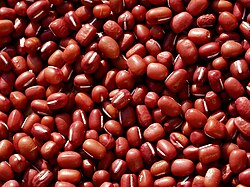Five oriental species of beans (1914) (14588588259)
Piper, Charles V. (Charles Vancouver), 1867-1926;
Morse, W. J. (William Joseph), b. 1884Identifier: fiveorientalspec119pipe (find matches)
Title: Five oriental species of beans
Year: 1914 (1910s)
Authors: Piper, Charles V. (Charles Vancouver), 1867-1926 Morse, W. J. (William Joseph), b. 1884
Subjects: Beans Varieties
Publisher: Washington, D.C. : U.S. Dept. of Agriculture
Contributing Library: U.S. Department of Agriculture, National Agricultural Library
Digitizing Sponsor: U.S. Department of Agriculture, National Agricultural Library
View Book Page: Book Viewer
About This Book: Catalog Entry
View All Images: All Images From Book
Click here to view book online to see this illustration in context in a browseable online version of this book.
Text Appearing Before Image:
ce bean is most frequently seen inChina and India, but it is also cultivated in Japan and the Philippines. Presumably the cultivation of all of these was relatively moreimportant previous to the discovery of America, which led to thegeneral dissemination of the kidney bean and the Lima bean, bothof which are now largely cultivated in all the regions mentioned.Nevertheless, the five oriental species are still of considerable agri-cultural importance and doubtless will always be cultivated. Allof them have been rather extensively tested from the standpointof forage and of green-manure crops in the United States, especiallyduring the past six years, but it seems doubtful whether any ofthem can compete in these respects with the cowpea and the soybean. As producers of seed for both human food and animal food,however, there are possibilities in these crops well worthy of muchfurther investigation. Their final position in American agriculture Bui. 1 1 9, U. S. Dept. of Agriculture. Plate I.
Text Appearing After Image:
Full-Grown Pods and a Branch with Leaves and Flowers of the Adsuki Bean. FIVE OEIENTAL SPECIES OF BEANS. 6 will perhaps depend more on their acceptability as human food thanon their value for other purposes. The adaptations of these five species of beans are very similarto those of the cowpea, all requiring hot summer weather for theirsatisfactory development. The varieties of the mung and the urdare fairly numerous; some early, others late. The moth has butfew varieties and all are rather late, so they will not mature as farnorth as Virginia. The adsuki produces numerous early varietiesand some of these will probably ripen wherever the common beanwill mature. Generally speaking, the mung, urd, moth, and ricebeans are to be compared to the cowpea, while the adsuki is to becontrasted with the common bean. THE ADSUKI BEAN. The adsuki bean (PJiaseolus angularis (Willd.) W. F. Wight;PI. I) is much cultivated for human food in Japan and Chosen and toa less extent in China and Manchuria, bufiveorientalspec119pipe
Note About Images
Relevante Bilder
Relevante Artikel
AdzukibohneDie Adzukibohne ist eine Pflanzenart aus der Gattung Vigna in der Unterfamilie der Schmetterlingsblütler (Faboideae) innerhalb der Familie der Hülsenfrüchtler. Diese Nutzpflanze ist nahe verwandt mit einer Reihe anderer „Bohnen“ genannter Feldfrüchte wie der Mungbohne, aus der die sogenannten Sojasprossen hergestellt werden. .. weiterlesen








